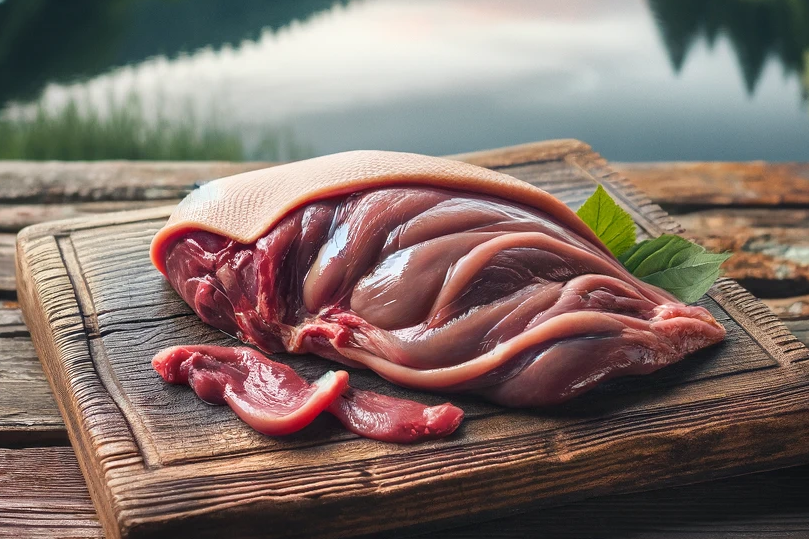Pheasant lung

A dog's diet is a fundamental aspect of its health and well-being. In the constant search for optimal ingredients for dog food, one occasionally comes across lesser known but potentially valuable ingredients. One such insider tip could be pheasant lung. This article looks at what pheasant lung is, its benefits and potential drawbacks in dog nutrition.
What is pheasant lung?
Pheasant lung is, as the name suggests, the lung of the pheasant, a game bird that is popular both for its tasty meat and for hunting. In the context of dog nutrition, pheasant lung is a by-product of pheasant processing. It is characterized by its high protein content and easy digestibility. Pheasant lung can be used fresh, dried or as part of dog food mixtures.
Nutritional value and benefits
High protein content
Pheasant lung is rich in high-quality proteins, which are essential for maintaining muscle mass, repairing body tissue and supporting a dog's immune system. Proteins are the building blocks for enzymes and hormones and play a crucial role in almost all biological processes in a dog's body.
Low fat content
Compared to other types of meat, pheasant lung has a relatively low fat content. This makes it an excellent ingredient for dog food, especially for dogs that are prone to obesity or need a low-fat diet.
Rich in essential nutrients
Pheasant lung is a source of vitamins such as B vitamins, which are important for energy production, and minerals such as iron, which is essential for blood formation. These nutrients support a variety of bodily functions and contribute to a dog's overall health.
Possible disadvantages
Availability and cost
One of the main disadvantages of pheasant lung could be its availability. Since pheasants are bred less frequently than other poultry species, it can be more difficult to find pheasant lung. This can also lead to higher costs compared to other meat sources.
Allergy potential
Although allergic reactions to pheasant lung are rare in dogs, there is always a risk of food allergy, especially in dogs with a history of sensitivities to certain proteins.
Pheasant lung offers an interesting way to enrich a dog's diet with a high quality protein source that is also low in fat and provides important vitamins and minerals. Its use can be particularly beneficial for dogs with specific dietary requirements. However, dog owners should weigh up the potential disadvantages, such as limited availability and cost, and exercise caution with dogs with food allergies.
If you notice any signs of hypersensitivity or poisoning in your dog, you should see your vet immediately. We are not a substitute for a vet, but we try to be as accurate as possible. Every dog reacts differently and we recommend you get a second opinion or consult your vet if in doubt.
Stay healthy and take good care of your four-legged friend!😊
Similar to Pheasant lung
Chicken lung is a by-product of poultry slaughter. It consists of the tissue that lines the trachea and bronchi of chickens. Chicken lung has a soft and spongy consistency and a mild taste. It is...
Duck lung is a by-product of poultry processing and refers to the lung tissue of the duck. It is valued in animal nutrition for its high protein content and soft texture. Duck lung can be used raw,...
Quail lung, the respiratory organ of the quail, is a light, porous tissue that is rich in protein and low in fat. In animal nutrition, it is often dried or processed into a fine powder for use as a...
Rabbit lung is a by-product of rabbit slaughter. It is the organ responsible for respiration. Rabbit lung is rich in protein and has a low fat content. It also contains iron, zinc and vitamin B12....



